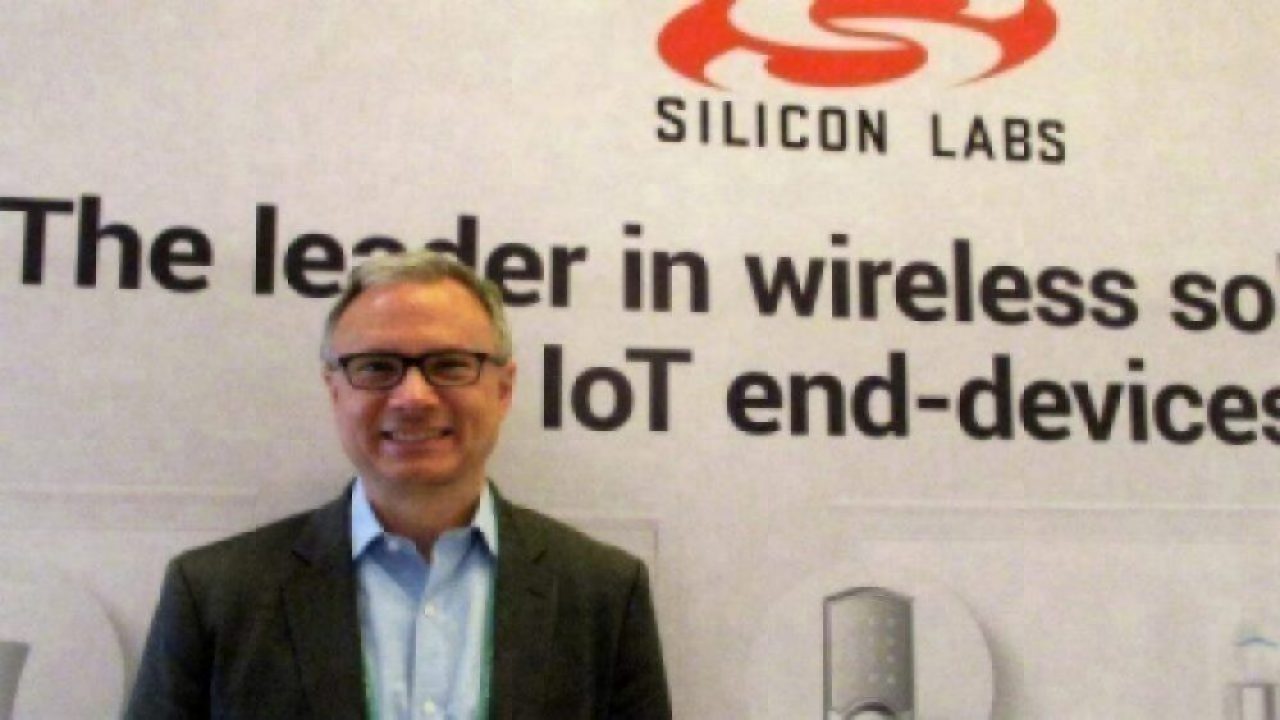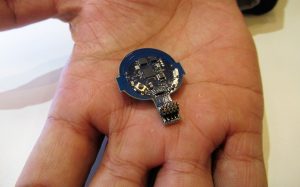Silicon Labs’ CEO on IoT, UWB and AI
Article By : Junko Yoshida

EE Times speaks to Silicon Labs CEO Tyson Tuttle about IoT, AI, and UWB.
LAS VEGAS — “We are still in the early days of market adoption of IoT,” Tyson Tuttle, CEO of Silicon Labs, told EE Times at the company’s booth during CES.
But wait, hasn’t the electronics industry been talking about the internet of things (IoT) for more than two decades? Trace back to the time when RFID tags began to be touted as a must-have in supply chains. (Kevin Ashton, the then-director of the Auto-ID Center, is widely known for having coined the phrase “IoT” back then.)
Besides, the industry supposedly has all the necessary building blocks for IoT: a low-energy microcontroller, wireless connectivity, sensors, and maybe antennas in an IoT module. At this point, isn’t IoT essentially a “bing-bang-boom”?
Not necessarily. Tuttle maintains that IoT is a market that takes decades to unfold. Consider the IoT attach rate for commercial lighting systems, he said. “We are probably at 10% to 15% … It’s still low.”
Selling into the future
In Tuttle’s mind, transitions this big are never done and never enough. Furthermore, the technologies applied to IoT are constantly advancing.
As IoT continues to look for design wins in the industrial market, Tuttle said that the chip supplier’s job is never done at the time of sales. He said, “We are selling our chips into the future.”
In other words, “Our products must be able to support new software, protocol updates, and applications — all that — over the next 10 to 15 years.” That’s a long-haul business.
IoT users in the industrial market are also looking for IoT devices that are contextually aware. Location is one important element.

Silicon Labs’s new Bluetooth SoC, EFR32BG22
Silicon Labs just announced this week the company’s new Bluetooth SoCs, capable of asset tracking. The new low-energy device takes advantage of Bluetooth Angle of Arrival and Angle of Departure capabilities, thus offering sub-1-m location accuracy, according to the company.
Location, however, is just one element that can make IoT aware of its context. Others, such as light, sound, voice, and vision, can make IoT devices “a lot more aware of the environment they are operating in,” Tuttle explained.
The next logical step is to add AI to the IoT module. Tuttle promised that Silicon Labs will deliver in 2020 an IoT solution integrated with AI acceleration. By making IoT devices “trainable, actionable, and capable of extracting information and learning from the environment,” they become a lot more contextually aware, he explained.
Of course, Silicon Labs isn’t alone as it looks to add machine learning on end nodes. But rather than forcing inference jobs to run on current devices, Silicon Labs plans to add an AI acceleration feature to the company’s Wireless Gecko Series 2 platform.
Unlike competing AI edge devices plugged into the wall, Tuttle said, “Our goal is to get this [IoT devices with multiple sensors and AI features] hooked up with wireless network or connected smartphones. The name of the game is to enable machine learning on a very low-power, always-on device with a limited memory budget.”
Armed with its Gecko MCUs known for its low-energy sensor interface and interconnect features such as Peripheral Reflex System, Silicon Labs believes it has an edge in the race to add machine-learning features to IoT solutions.
The low-energy sensor interface, for example, can connect to duty-cycling inductive, capacitive, and resistive sensors while autonomously operating in Deep Sleep mode. With Gecko MCUs, the peripherals also connect directly to one another, allowing them to communicate without waking up a CPU or seeking its intervention.
“These are all great features unique to our Gecko MCUs, and some people even say that this is enough,” said Tuttle. But the company is taking more steps to optimize AI functions on IoT devices.
Tuttle wouldn’t disclose details and timelines for the new AI products. However, he implied that they will be ready when Silicon Labs holds its own “Works With Smart Home Conference” in September. “We will bring Google, Amazon, and others onto the stage,” said Tuttle.
How about UWB?
With the introduction of the Bluetooth 5.1 spec, Bluetooth can now do fine-grained positioning. Accuracy of positioning is accomplished by an Angle of Arrival mechanism. Undoubtedly, this will become essential to context-/location-based IoT applications.
But if positioning is so critical, how about using ultra-wideband (UWB)?
Tuttle said, “Absolutely. We are interested. Things are getting more interesting as UWB becomes a part of iPhones and Samsung’s phones.” But he added, “Just to be clear, that is not to say that Silicon Labs is going to do UWB.”
In the past, when UWB was gunning for wireless streaming, positioning itself to compete with Wi-Fi, Tuttle said, “We — at Silicon Labs — never chased that market then.”
While UWB has its limitations, especially at distance, it offers more accurate location than other technologies. UWB will be great for a set of applications, said Tuttle, such as payments at point of sale. “But we will wait and see.”
For its IoT business, Silicon Labs sees itself focusing on local rather than wide-area networks such as LTE and LoRa. The same could apply to UWB. “In our business, what we decide not to do is just as important,” said Tuttle.
Subscribe to Newsletter
Test Qr code text s ss


